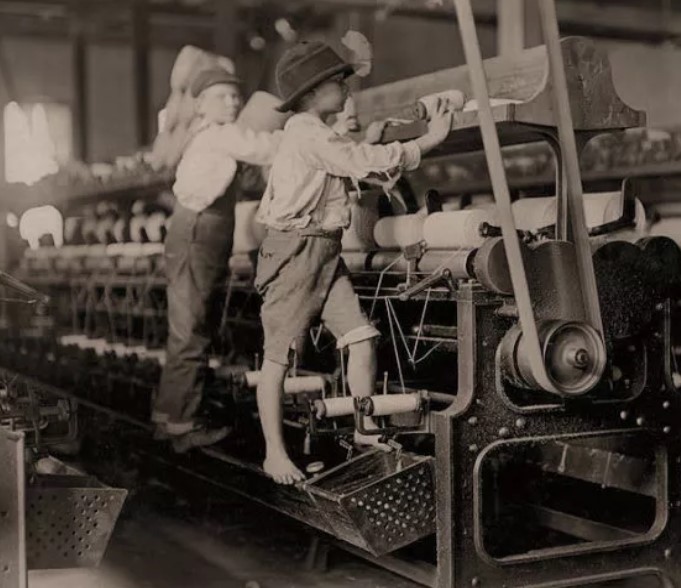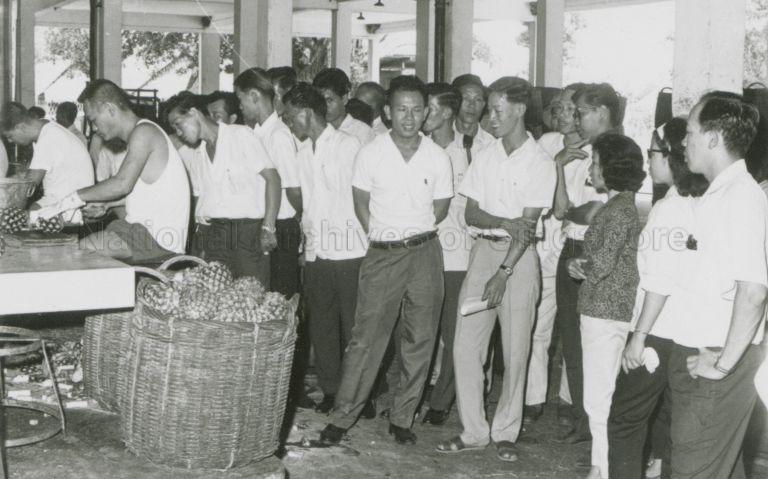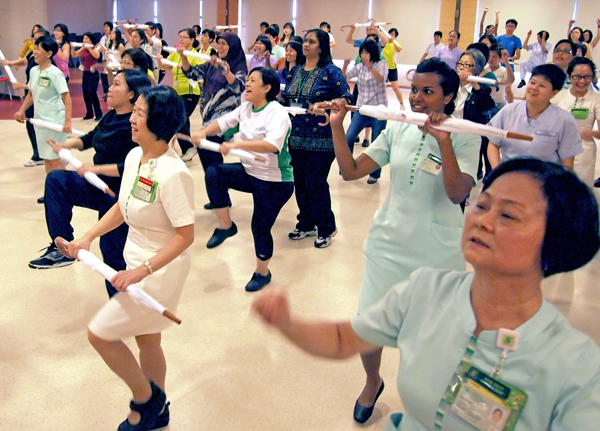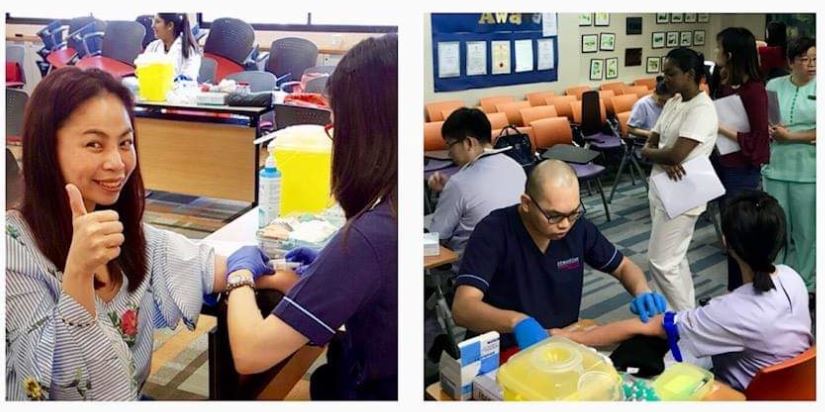The reason why SGH takes workplace health and safety most seriously can be traced back to the 18th century.
Across the dank and grimy cobbled streets of London, Joe ran as if the hounds were chasing him. In his palm he clutched a small piece of mouldy bread, which was barely enough to stave off his hunger and the needs of a growing 8-year-old body. Joe was almost late for work. He willed his scrawny legs to run faster, and tried not to think about how the foreman routinely abused other workers for being tardy. “Time is money”, Joe was told, and he was but a cog in the machinations of the Industrial Revolution.

Photo credit: www.historycrunch.com
Two boys operating a spinning machine in a textile mill. Injuries such as loss of limbs were common
Such was common in 18th century Britain. As the march of industry gathered pace, thousands of factories sprang up all over the country, unregulated and unchecked. Child labour was commonplace and very young children were forced to work extremely long hours and suffered severe punishments for mistakes.
To address the gruelling and often unsafe working conditions, the first Factory Act was passed in 1833, empowering factory inspectors to report misdeeds and abuse directly to the central government. The concept of ensuring workplace health and safety was thus born.
Evolution of workplace safety and health (WSH) in Singapore
In modern times, industries recognise the need for adequate safety and health considerations, and have taken the responsibility to hire dedicated staff to ensure safety and health systems are in place. Comprehensive risk assessments for hazardous work are commonplace. Proper workplace training and health benefits are also standard in almost all companies.

Women at work in a rubber factory, 1950s. Reproduced with permission from National Archives of Singapore.
To get to this stage, Singapore had to learn from the painful lessons of our pioneer generation, who toiled in unsafe and unsanitised conditions post-independence. Because many workers were undertrained to operate machinery and ignorant of work-related risks, tragic loss of lives from shipyards, construction sites and granite mines were not uncommon in the island-state’s pursuit of economic and social development.
Doctors, engineers and policymakers worked tirelessly following the adverse worksite events to engage and enforce a minimal standard of workplace safety and health across industries in the 1960s.

Field trip for farmers to a pineapple factory, 1960s. Reproduced with permission from National Archives of Singapore.
Eventually, a generation of industrial partnership and continual improvement culminated in the Workplace Safety and Health Act in 2006, a key legal framework protecting workers from adverse workplace events, and the Workplace Safety and Health Council, an industry-led statutory body which partners industry stakeholders, employers, workers’ unions and other relevant parties to monitor and improve workplace safety and health outcomes in Singapore.
Today, there is a significant reduction in workplace incidents in Singapore. Occupational diseases that were once prevalent, such as silicosis and asbestosis, have declined in incidence. The fatality rate of workers has also dropped from 4.9 per 100,000 in 2004 to 1.2 per 100,000 in 2017, a 13-year low. These are due in part to a shift in our occupational landscape towards more high-tech industries and those higher in the value chain (e.g. financial services). The other factor is the government’s emphasis on inculcating a strong safety and health culture at all workplaces with greater ownership by both employers and workers.
Workplace safety and health within SGH
In SGH, protecting the health of our staff also means they are better able to deliver safe, effective and efficient care to our patients. The Occupational and Environmental Medicine Unit (OEM), Workplace Safety & Health, and Work Life Unit are the main guardians of workplace safety and staff well-being.

SGH staff getting a work out during our annual Active Month organised by Work Life Unit.
The mutually reinforcing relationship between safety and health has long been recognised. SGH upholds a strong emphasis on the health of our staff because this has a direct impact not only on work performance, but also work safety and the overall well-being of our people.
Throughout the year, there are regular exercise classes, sports events and competitions to promote a physically active lifestyle while fostering team spirit among staff. We partner the Health Promotion Board to implement various workplace health promotion programmes, such as shaping healthier dietary behaviour for nurses who perform shift work. With more than half our waking hours spent at work, the workplace is a unique touch-point to strengthen preventive health efforts and reduce the risk of chronic diseases.
At the frontline of work, there is a strong focus on preventing work injuries before they even occur. This is achieved through education and occupational health and safety programmes. During job induction, nurses are taught the correct occupational ergonomic techniques for patient care and patient transfer to prevent work-related musculoskeletal injuries. Routine vaccination programmes for healthcare workers also protect their patients, their family members and themselves from vaccine-preventable infections such as influenza and blood-borne diseases.
Being a tertiary hospital with an active ecosystem in biomedical research, there are potential biological, chemical and other occupational hazards that can affect our staff. Regular safety walkabouts allow personnel from other work units to provide an independent assessment and encourage cross-sharing of best practices. This will not only tangibly improve work safety and health practices, but also nurture a learning culture and WSH ownership in our people.

Work-Life (Human Resource) and OEM jointly organise the bi-annual mass health screening for staff so that they have early detection of chronic diseases.
Workplace safety and health has come a long way in Singapore and around the world. The current age of the Fourth Industrial Revolution will bring about more opportunities to leverage technology to improve workplace safety and health for all workplaces, big or small. This is also in line with the national Smart Nation initiative in using technology-driven solutions to improve the way we live, work and play. Ensuing safe and healthy workplaces must therefore be a national imperative and a global vision, one that needs to be here sooner than later.
In conjunction with The International Labour Organisation 2019 World Day for Safety and Health at Work. Watch the video here to learn more
We love mail! Drop us a note at [email protected] to tell us what you like or didn’t like about this story, and what you would like to see more of in LighterNotes.
